Cleaning AC coils quickly, safely, and thoroughly is the single most important AC coil maintenance task a Florida homeowner can tackle. This updated 2025 guide on cleaning AC coils shows you how to clean AC evaporator coils, how to prevent dirty evaporator coils, and how routine AC coil maintenance saves money, energy, and headaches for Boynton Beach-area residents. Secondary keywords such as clean AC evaporator coils, dirty evaporator coils, and AC coil cleaning tips are woven throughout for maximum search performance.
Why Meticulous Cleaning of AC Coils Matters
Failing to clean AC coils leads directly to higher energy bills, premature equipment failure, and—let’s be real—Florida-level humidity that makes every room feel like a sauna. By staying on top of cleaning AC coils, you maintain optimal airflow, prevent mold growth, and extend compressor life. Even the EPA notes that a well-maintained HVAC system can cut energy use by up to 30 percent.
How to Clean AC Evaporator Coils
When it’s time for the yearly preventive maintenance on your air conditioner, don’t forget to pay special attention to system parts that are out of view within the system cabinet or air handler enclosure. The unit’s evaporator coils are among the extra essentials of these covered components. When problems happen with filthy evaporator coils, your A/C’s effectiveness can drop, it’s production will decrease, and destruction or malfunctions can occur. Here is some necessary data on the air conditioner role and the value of evaporator coils, concurrently including some instructions on how to wash A/C evaporator coils.
The particular importance of evaporator coils
Evaporator coils catch the heat of the air inside your home. In contrast, condenser coils issue that seized weather into the air encompassing the A/C’s outside unit. Those coils are ordinarily made of copper and are enclosed by a series of aluminum fins that increase heat transfer. Evaporator coils are located inside the indoor air handling unit, while condenser coils are held in the outside cabinet.
Evaporator coils are vitally crucial to the cooling execution of your air conditioning system. They give the cooling that is needed to create the cold air that retains your home or business’s comfort even when temperatures are at their most blistering.
Evaporator coils are also required in the dehumidification of your air conditioner renders. As these coils shift cooler, water decreases on them and is eliminated from the air inside your house. This water is gathered in a drain pan, wherever it flows elsewhere safely.
When evaporator coils get nasty, their production in these two duties is significantly decreased. Air flowing over the coils can hold dust, pollen, and additional particulates. Since these coils are regularly damp of the dehumidification method, it is straightforward for contaminants to adhere to them. Unclean air filters in the ac system (or the deficiency of filters entirely) can raise the volume of substance that makes association with the evaporator coil. In just a little amount of time, sufficient material can concentrate on the coils to decrease their performance.
If evaporator coils and condenser coils get dirty, there can be dilemmas such as:
- Decreased heat transfer.
- Reduced cooling capacity.
- Improved energy consumption.
- Improved operating pressures and temperatures.
- Raised wear on the system, which can lead to component damage, system failures, and reduced longevity
A buildup of ice on the coil
Overall, you can assume an air conditioner with dirty coils to handle almost 40 percent more power than an individual with clean coils. Cooling capacity can be decreased by 30 percent or higher. Your repeated utility bills will fly even as your air conditioner remains to lose productivity and performance.
Basic air conditioner service
Split-system cooling systems before-mentioned as central air conditioners consist of an indoor and outdoor unit. The outdoor system holds the condenser, condenser coils, and compressor. At the same time, the indoor unit includes the evaporator, evaporator coils, and the air handler. Heat is received by the evaporator coils and scattered by the condenser coils.
As the refrigerant flows through the system, it varies state from a liquid to a gas and following again, depending upon where it is in the cycle. Heat is consumed or released during these changes of land. The process, cooling is created for your home or business location. Aeriform refrigerant carries heat, and into the outdoor unit, it is pressurized in the compressor. The coolant then enters that condenser, wherever the heat it includes is discharged into the outside air by the compressor coil. In the process, the refrigerant passes to its liquid state.
The liquid coolant then flows inside the evaporator, wherever it evaporates into a gas. As this method occurs, the refrigerant absorbs the heat of the air throughout it. The evaporator coil becomes very cold and matches the source of the fresh air that is circulated to your home. The air handler flows air across the chilled evaporator coil. As the cold air passes beyond the coil, it is delivered into the ductwork system. There, it is sent into your house through vents and entries at the ends of the duct network. Return ducts bring hot expended air back to the system, where the air is filtered, and the sequence starts over again.
The significance of regular A/C maintenance
Proper preventive maintenance is essential to keeping your air conditioner running properly. Maintenance should be completed at least yearly, generally before the cooling season starts. In most significant cases, periodic maintenance should be performed by an HVAC professional. Tasks completed include system experimentation and adjustment, minor repairs and component replacements, air filter replacements, and cleansing of the evaporator, including condenser coils.
You should perform any of these maintenance duties yourself, such as switching air filters. If you are mechanically willing, you can additionally clean the evaporator coils. Here are some useful measures for how to wash A/C evaporator coils, based on the variety and extent of cleaning performed. These actions can additionally be used to clean the compressor coils in the outdoor cabinet.
How to clean A/C evaporator coils
Evaporator coils should remain checked and cleaned as needed. If these coils are inclined to collecting dirt and debris quickly, monthly cleaning may be required. Otherwise, you might need to clean them each three months during colder seasons or annually during usually scheduled preventive maintenance.
Clean A/C evaporator coils by getting access.
The indoor air-handling unit should have an access panel that can be removed to reveal the evaporator coil. If required, check your A/C owner’s handbook to locate the entrance and evaporator coil.
Air conditioner off at the thermostat.
Extract the screws or other ties to loosen the entree panel.
Lay the panel and screws down where they won’t get lost.
Cleaning the A/C evaporator coils with compressed air:
Light buildups of dirt plus other material can frequently be removed, applying compressed air to blow them free of the evaporator coil.
Through compressed air over the coil in the reverse direction of normal airflow, from the cleanser to the dirtier side.
For further stubborn pieces, place the air nose close to the bottom side of the debris. If using high-pressure air, direct it either at a 90-degree angle or directly through the fins. This will stop damage to the fins. Maintain constant airflow across the coil. This will remove buildup without forcing it further into the fins and performing it more challenging to remove. Avoid blasting dust, dirt, and debris in the ductwork system or your home’s living spaces. Wear eye safeguard to hold the material out of your eyes. If necessary, use a store vacuum cleaner to obtain stuff as it is removed.
Cleaning the A/C evaporator coils with a brush:
Brush cleaning can be a beneficial technique for removing minor accumulations of dirt of evaporator coils. Brush cleaning allows the use of liquids or substances. It gives you higher authority over the force applied to the reels and fins.
Use the brush to the coils and clean dirt piles away.
Scrub with the brush to break free harder-to-remove material.
Avoid using cable brushes or hard-bristle brushes because they may harm the fins.
Cleaning A/C evaporator coils using industrial cleaners:
Many major brands of commercial cleaners are available for cleaning evaporator coils. Most significant are a foaming kind deteriorate and drain the unit’s drainage system. Call All Time Air Conditioning for information on which cleaner would serve best for your situation.
How to clean A/C evaporator coils using mild detergents and water:
In the place of a commercial cleaner, you can use mild soap and warm water to clean the coils. Mix hot water and a simple cleanser in a spray bottle, grip sprayer, or garden sprayer. Apply the liquid and detergent liquid to the evaporator coils. Give the solution a few moments to a few seconds to soak in and free debris. Reapply as needed. Wipe off the loose stuff with a soft cloth or brush.
How to clean A/C evaporator coils: heavy-duty cleaning:
Heavily dirty evaporator coils may need strong chemicals or heavy-duty cleansing techniques, including equipment such as a force washer or steam cleaner. The method could also need revisions to your A/C system, such as removal of the coil, cutting and reattachment of refrigerant channels, replacing the vacuum in the refrigerant channels, and refilling the system refrigerant.
If your A/C evaporator coils are heavily soiled or are dirty enough to affect the air conditioner function seriously, you should schedule a professional cleaning and maintenance appointment with your local HVAC contractor. All Time Air Conditioning can accurately assess the job and will clean your evaporator coil and restore the cooling system function without causing damage to the reels, fins, or other components.
All Time Air Conditioning provides professional heating, air conditioning, and plumbing services. Reach us today for more knowledge on how to wash A/C evaporator coils or to schedule expert maintenance to clean your home or business cooling system.
Pro Tips for Cleaning AC Coils in Humid South-Florida Climates
- Schedule bi-annual coil inspections during March and October to beat the Boynton Beach heat before peak seasons.
- Use a foaming no-rinse coil cleaner rated for aluminum fins; it melts grime and rinses itself into the condensate pan.
- Install a high-MERV return filter to capture dust before it packs onto the coil surface.
- Upgrade to UV-C lights inside the air-handler to sterilize bio-film and minimize mold on wet coils.
Internal Resources That Deep-Dive into Related Coil Problems
For step-by-step walkthroughs that complement this cleaning AC coils guide, browse our in-house knowledge base:
- AC compressor not working but fan is running – causes & fixes
- Essential AC maintenance checklist for maximum efficiency
- Stop water dripping from AC vents – troubleshooting condensate issues
Pro-Level Quote to Remember
“A spotless evaporator coil can slash cooling costs by up to 30 percent—clean coils, clean conscience, lower bill.” – All Time Air Conditioning Service Team
Cost Savings: Numbers Don’t Lie
According to FPL’s residential rate calculator, every ton of air-conditioning that runs with dirty coils may guzzle an extra 0.3 kWh per hour. For a typical 3-ton system that logs 2 000 cooling hours annually, cleaning AC coils can shave roughly 1 800 kWh off your bill—which translates to more than $250 per year in Palm Beach County.
What Happens If You Neglect AC Coil Cleaning?
- Frozen evaporator coils that eventually flood the air-handler and ruin flooring.
- Compressor burnout—a five-figure replacement nobody wants.
- Indoor air-quality decline as moisture-laden dust becomes a breeding ground for bacteria and mold.
- Warranty voidance; many manufacturers require documented coil maintenance.
Expert Boynton Beach AC coil maintenance & repair services
DIY Coil-Cleaning Toolkit Checklist
- Fin comb (for straightening crushed aluminum fins)
- Foaming no-rinse coil cleaner (EPA-registered)
- Soft-bristle nylon brush
- Adjustable PSI compressed-air gun
- Nitrile gloves and eye protection
- Wet/dry vac with HEPA filter (for debris collection)
- Garden sprayer pre-filled with mild detergent solution
Safety First: Turn Off Power!
Before cleaning AC coils, always shut off power at the thermostat and the breaker to prevent electrical shock or short-cycling.
Quick Humor Break
“Trying to clean live coils is like trimming hedges during a hurricane—technically possible, but why risk the fireworks?”
Environmental Impact of Dirty AC Coils
When coils are clogged, the system runs longer, pushing more greenhouse-gas-heavy electricity through the grid. Multiply that by the 110 million U.S. households using central AC and it’s clear: cleaning AC coils is a personal climate-action step.
Eco-Friendly Coil-Cleaning Alternatives
Biodegradable enzymatic cleaners break down organic matter without harsh acids, making them safe for pets, kids, and Florida’s waterways.
Install a REME Halo UV-light for ongoing coil sterilization
- Reduces VOCs and microbial growth on the coil surface.
- Lowers cleaning frequency requirement by up to 50 percent.
Case Study: 24 Hour Café in Boynton Beach
After quarterly AC coil cleaning, the café’s walk-in temperature dropped 3 °F while power usage fell 18 percent compared with pre-cleaning baseline.
“We thought we needed a bigger unit; turns out we just needed clean coils.” – Café Owner, 2024 Energy Audit
Ready for Pro-Level Coil Cleaning?
Don’t have time to DIY? Book an on-site coil-cleaning package and breathe chilled, energy-efficient air all year.
Click here for a free AC coil-cleaning estimate from All Time Air Conditioning
Frequently Asked Questions
- How often should I be cleaning AC coils in South Florida?
- Every six months for coastal climates because salty air accelerates corrosion and dust build-up.
- Can dirty evaporator coils cause a musty smell?
- Yes. Mold spores thrive on wet, dusty coil fins, producing that “old-gym-sock” odor that wafts through ducts.
- Is compressed air safe for cleaning AC coils?
- Yes, if you keep the nozzle at a right angle and stay below 120 psi to avoid fin damage.
- Will cleaning AC coils void my warranty?
- No—skipping maintenance is what usually voids warranties. Always document each coil-cleaning session.
- What’s the best cleaner for aluminum AC coils?
- A pH-neutral foaming detergent designed specifically for HVAC coils; avoid acidic products that corrode aluminum.
- Can I pressure-wash outdoor condenser coils?
- Only with a low-pressure setting (under 400 psi) and a 45-degree spray angle; otherwise, fins may fold.

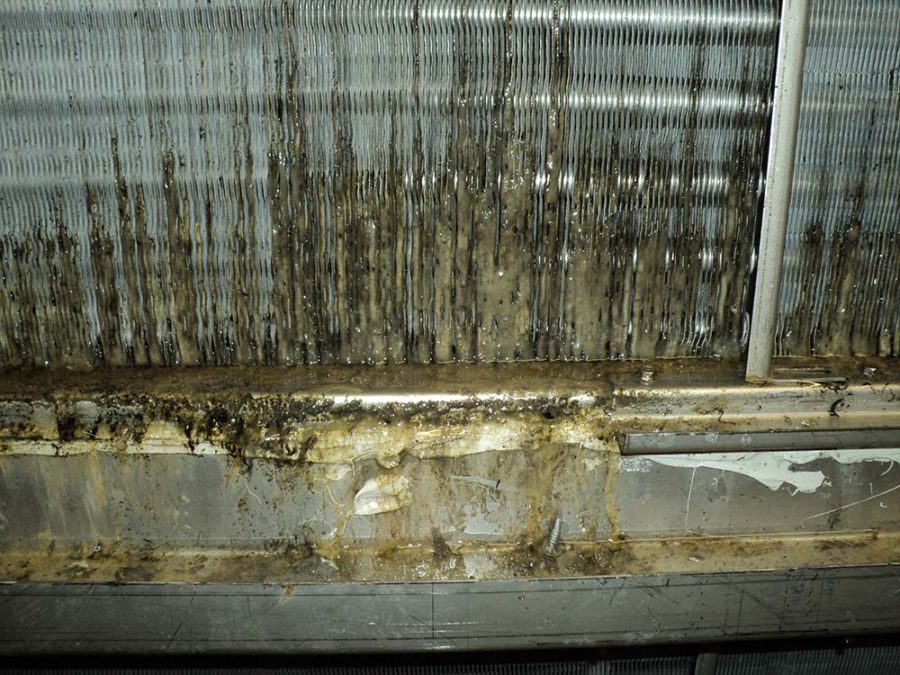
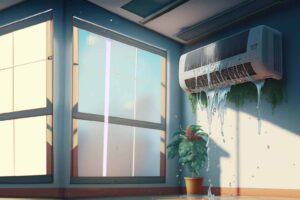
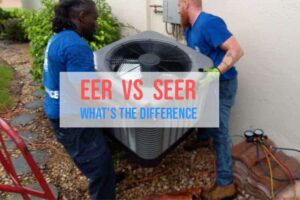
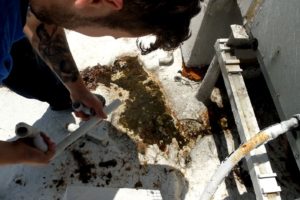
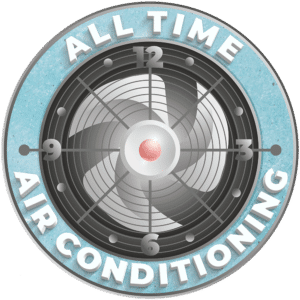




Leave a Reply
Your email is safe with us.